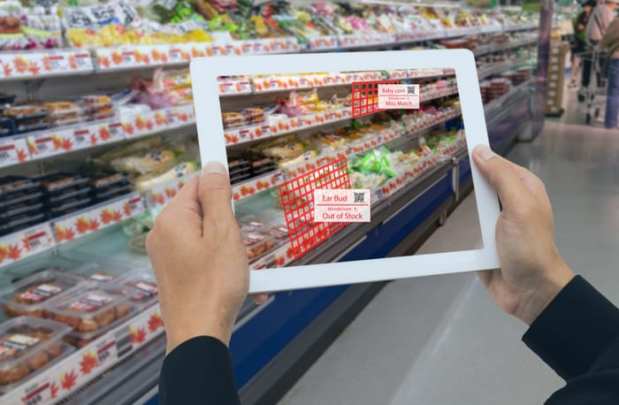Is Connected Tech Making Store Shelving Too Smart?

In the annals of favored retail buzzwords over the last half-decade ago, “personalized” has risen to the top of the pack, usually paired with the other perennial favorite of the last few years: “experience.” The customer hasn’t just come to the store to buy something, the logic goes – after all, if they just wanted a specific one-off item, they would have ordered online or on mobile. If they’ve come to the store, they want something more: to discover something new, to encounter products when they don’t know quite what they are looking for, and to enjoy the experience of being out in the world and actually shopping.
To convert that customer, so goes the emerging conventional wisdom, the brick-and-mortar retailer has to create something as close to the custom shopping experience as possible. If brick-and-mortar players want to race with the legion of digital upstarts, they need to leverage the physical store’s greater ability to make a direct physical connection to the customer – per the wisdom.
The challenge with that advice is that physical stores start the customer interaction at something of a data deficit as compared to their digital counterparts, who can view much of a consumer’s entire purchase history every time they log in. The physical customer is anonymous, and though various mobile technology solutions have been proposed to bridge that gap – such as omnicommerce loyalty offerings and beacon technology – the data divide has proven to be somewhat difficult to bridge in the world of brick-and-mortar retail.
A new technological avenue opened up by Mood Media takes an interesting approach to personalizing the retail experience. Instead of trying to determine who the customer is specifically – i.e., their buying history, preferences and specific data as a shopper – Mood instead offers retailers smart shelves that, for lack of a better term, “look” at the customer while the customer is looking at them, and then uses what it learns to enhance the retail journey.
Specifically, the cameras log specific physical details about shoppers as they walk by – their gender, their likely age, whether or not they are wearing glasses or have a beard and, according to the tech’s maker, even their mood. Supposedly, the tech can detect whether a customer looking at an item on a shelf is delighted or disgusted by what they are encountering.
From there, that data can be used to influence the customer’s experience as they move about the retail location, though the contours of that experience will vary depending on the type of store. For example, a grocery customer who stopped to look longingly at a package of Oreos but didn’t ultimately grab them might then see an ad for Oreos displayed on the screens throughout the shop.
Advocates of the technology note that it is useful to shoppers because it can streamline and enhance their experience with simple actions, like guiding them toward objects they seem to be interested in that are on sale. Moreover, the company noted, the experience brings consumers’ physical shopping experience more in line with what they are used to online.
As Mood Media noted customers are generally looking for ways to make their shopping experience smoother and to connect more quickly and efficiently with goods and services that are of interest to them.
Privacy experts aren’t so sure: They are referring to the tech as packing a “high creepiness factor,” and noting that customers like knowing when and how their data is being taken – and, in the case of smart shelves, they often don’t even know they are being digitally watched.
Today, the technology is in limited applications. Walgreens has it in a few urban locations and Kroger has been piloting it since early this year. It remains to be seen whether consumers themselves will be as worried as the privacy advocates – often, consumers prove to be less recalcitrant than expected when it comes to handing over personal data in pursuit of better service. The greater test may lie in seeing whether smart shelves live up to their billing and can really “see” as much about the customer as claimed – and whether they can use that knowledge to actually tailor good recommendations.
Because usually when these types of technologies don’t work, consumer complaints about invasiveness are quick to follow.
